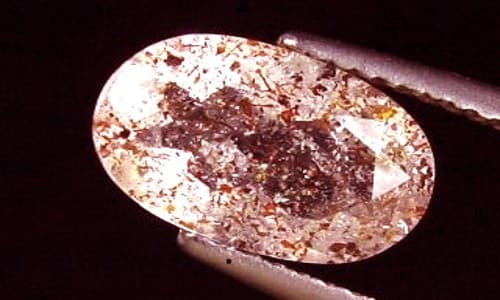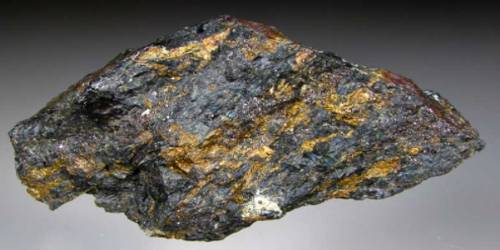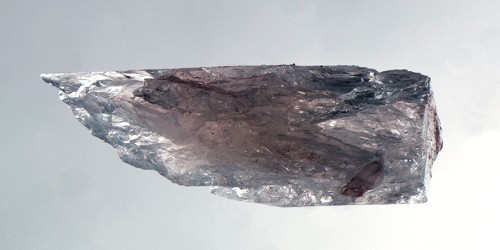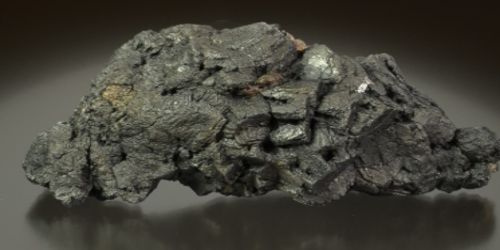Lepidocrocite [γ-FeO(OH)], also called esmeraldite or hydro hematite, is an iron oxide-hydroxide mineral. It is a red to reddish-brown mineral consisting of iron oxide hydroxide; often found in iron ores together with goethite. It was first described in 1813 from the Zlaté Hory polymetallic ore deposit in Moravia, Czech Republic. The name is from the Greek lipis for scale and krokis for fiber.
General Information
- Category: Oxide minerals
- Formula: [γ-FeO(OH)]
- Crystal system: Orthorhombic
- Crystal class: Dipyramidal (mmm)
- Color: Ruby-red to reddish brown; light reddish to red-orange in transmitted light; gray-white in reflected light.

Fig: Lepidocrocite
Properties
Lepidocrocite has an orthorhombic crystal structure, a hardness of 5, specific gravity of 4, a submetallic luster and a yellow-brown streak. It is red to reddish brown and forms when iron-containing substances rust underwater.
- Formula mass: 88.85 g/mol
- Crystal habit: Flattened scales aggregated into plumose groups and rosettes; massive, bladed to fibrous or micaceous
- Cleavage: {010} Perfect
- Mohs scale hardness: 5
- Luster: submetallic
- Streak: Dull orange
- Diaphaneity: Transparent
- Specific gravity: 4
- Optical properties: Biaxial (-)
The structure of lepidocrocite is similar to the boehmite structure found in bauxite and consists of layered iron (III) oxide octahedra bonded by hydrogen bonding via hydroxide layers. This relatively weakly bonded layering accounts for the scaley habit of the mineral.
Occurrence: A weathering or oxidation product of other iron-bearing minerals, in soils and mineral deposits; a precipitate from groundwater. In marine manganese nodules.
Lepidocrocite is commonly found in the weathering of primary iron minerals and in iron ore deposits. It can be seen as rust scale inside old steel water pipes and water tanks.
Association: Goethite, pyrite.
Information Source;
















